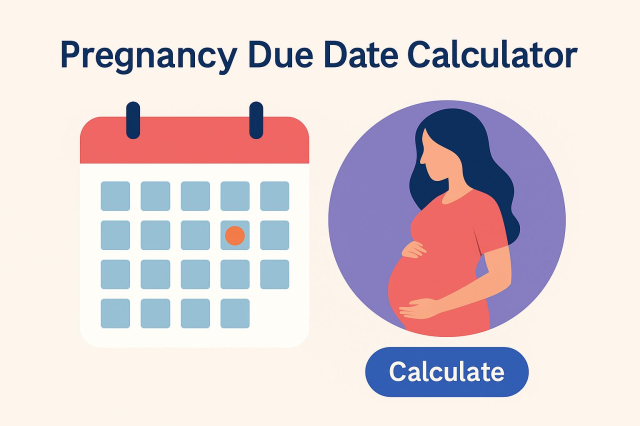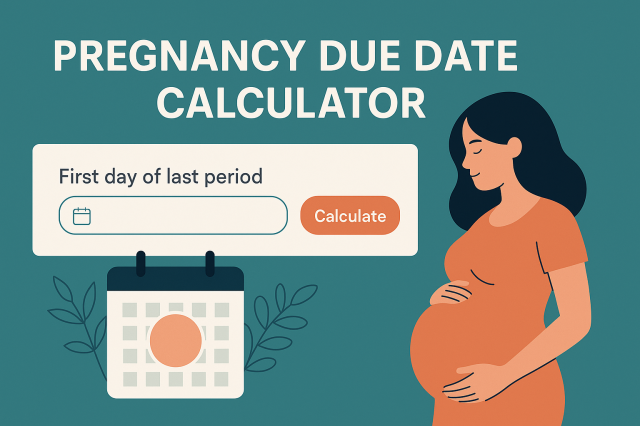Pregnancy due date calculators are essential tools for expecting parents. They help estimate when a baby is likely to arrive, providing a timeframe for preparation. The calculator typically uses the last menstrual period, ovulation date, or IVF transfer date to determine the due date. Understanding this information can help track important milestones throughout the pregnancy.
Understanding Pregnancy Due Date Calculators
Pregnancy due date calculators are essential tools for expecting parents, providing estimates based on various factors related to conception and menstruation.
What Is a Pregnancy Due Date Calculator?
A pregnancy due date calculator is a resource designed to estimate when an expectant mother is likely to give birth. By inputting specific information, such as the date of the last menstrual period (LMP), users can receive an approximate due date. This tool simplifies the planning process for families preparing for their new arrival.
Benefits of Knowing Your Due Date
Understanding the expected due date comes with numerous advantages, including:
- Effective planning for the baby's arrival.
- Scheduling important prenatal visits and tests.
- Setting realistic expectations regarding labor and delivery.
Common Methods for Estimating the Due Date
There are several widely accepted methods for calculating a due date, each with distinct characteristics.
Last Menstrual Period (LMP) Method
This method calculates the due date based on the first day of the last menstrual period. Typically, it assumes a standard 28-day cycle, counting 40 weeks from that date. Many healthcare professionals prefer this method because it is straightforward and easy to remember.
Know our Period Cycle & Fertility Calculator here.
Ovulation and Conception Date Method
When individuals have a more precise record of their ovulation, such as through ovulation tracking, they can estimate their due date from that point. This calculation typically adds 266 days to the date of conception.
IVF Transfer Date Method
For those who conceive via in vitro fertilization (IVF), the due date can be estimated based on the transfer date of the embryo. If the embryo was transferred on day 5, for example, the calculation may involve counting 261 days from that date.
How to Calculate Your Estimated Due Date
Calculating the estimated due date is essential for expectant parents. It allows for better planning and preparation throughout the pregnancy journey.
Using Your Last Menstrual Period
The most common method for estimating the due date is based on the last menstrual period (LMP). This approach involves counting 40 weeks, or 280 days, from the first day of the last menstrual cycle. If the menstrual cycle is regular (about 28 days), ovulation typically occurs about two weeks after the LMP. For example, if the last menstrual period began on January 1, the estimated due date would be around October 7.
Calculating from Ovulation
For those with a precise record of ovulation, calculating from the ovulation date can provide a more accurate estimate. Add 266 days to the ovulation date, as conception occurs approximately two weeks after the LMP. This method can yield a timeline that more closely reflects the timing of the pregnancy.
Determining Due Date with IVF
In cases of In Vitro Fertilization (IVF), the due date can be estimated based on the embryo transfer date:
- If the embryo transfer was on day 5, count 261 days from that date.
- If it was on day 3, count 263 days.
This method takes into account the specific timing of the IVF process.
Navigating Irregular Menstrual Cycles
For women with irregular menstrual cycles, calculating the due date can be more complex. In such cases, healthcare providers may use ultrasounds to determine gestational age. These ultrasounds are typically more accurate in the first trimester and can help establish a more reliable due date.
Pregnancy Milestones and Tracking Your Progress
Tracking pregnancy milestones is essential for monitoring the health and development of both the mother and the baby. Various stages mark this journey, providing valuable insights into the progress of the pregnancy.
Pregnancy Weeks and Trimesters
A typical pregnancy lasts about 40 weeks, divided into three trimesters. Each trimester is significant for fetal development and maternal health:
- First Trimester (Weeks 1-12): The critical period for organ formation and early development.
- Second Trimester (Weeks 13-26): Growth accelerates, and the baby's sex can often be determined.
- Third Trimester (Weeks 27-40): The baby gains weight and prepares for birth, with increased fetal movements.
Important Tests and Procedures
Regular check-ups and specific tests help ensure both maternal and fetal well-being. Key tests include:
- Ultrasounds: Used to visualize the baby's development and monitor heart activity.
- Blood tests: Evaluate blood type, hemoglobin levels, and screen for conditions such as gestational diabetes.
- Amniocentesis: Conducted if prenatal testing indicates possible genetic disorders.
Monitoring Fetal Development
Fetal development can be tracked through both physical symptoms and medical appointments. Key indicators of growth include:
- Heartbeat: Typically detectable around weeks 6-7.
- Movement: Usually felt between weeks 18-22; a sign of a healthy, active baby.
- Growth Measurements: Periodic assessments of the baby's size and development during ultrasounds.
Answering Your Frequently Asked Questions

This section addresses some common inquiries regarding pregnancy due dates, their accuracy, and what to expect as the due date approaches.
How Accurate Is the Calculated Due Date?
Generally, the calculated due date provides an estimated target for delivery. However, it is important to recognize that:
- The calculation is based on average gestation periods.
- Individual pregnancies can vary considerably.
- Factors such as the mother's health, age, and cycle regularity can influence timing.
Research indicates that only about 4% of women actually give birth on their due date. Most deliveries occur within a two-week window before or after this date.
Can the Due Date Change?
Yes, the due date can change based on several factors. If there is:
- A discrepancy noted during an early ultrasound, medical professionals may adjust the due date accordingly.
- New information about the mother's cycle or ovulation is discovered, adjustments may be warranted.
Regular check-ups can provide an updated assessment of the estimated due date as the pregnancy progresses.
Dealing with Early or Late Births
It is common for babies to arrive either earlier or later than the anticipated due date. Understanding how to manage these situations is crucial:
- Babies born before 37 weeks are considered preterm, which may require extra medical attention.
- Those born after 42 weeks are deemed overdue and might need monitoring to ensure the health of the mother and baby.
Healthcare providers often have established protocols for both early and late births to ensure safe outcomes for both mother and child.
Preparing for Your Due Date
As the due date approaches, it’s important for expecting parents to focus on both emotional and physical preparation. This stage involves planning and organizing to ensure a smooth transition into parenthood.
Emotional and Physical Preparation
Preparing emotionally for the arrival of a baby can be as crucial as physical preparations. Parents may experience a range of emotions from excitement to anxiety. Key aspects to consider include:
- Building a support system: Engaging with friends and family who can offer assistance and encouragement.
- Attending prenatal classes: These can provide valuable information about childbirth and newborn care.
- Practicing relaxation techniques: Mindfulness, yoga, or meditation may help manage stress.
Physically, it’s essential to maintain a healthy lifestyle. Eating balanced meals and staying active within limits can contribute positively to overall well-being.
Prenatal Care and Health Supplements
Regular prenatal appointments are significant in monitoring the mother and baby's health during the final weeks. These visits typically include:
- Routine check-ups: Monitoring blood pressure, weight, and fetal development.
- Ultrasounds: Assessing fetal growth and confirming positions.
- Blood tests: Screenings to detect any potential health issues.
Health supplements, such as prenatal vitamins rich in folic acid, are advised to support the health of both mother and baby. Consulting with a healthcare provider on any medications is essential.
Choosing Baby Names and Birth Plans
Choosing a baby name can be a delightful, yet sometimes challenging, task for parents. Considerations often include:
- Family significance: Names that honor relatives or cultural heritage.
- Personal preferences: Exploring names that resonate with both parents.
A birth plan outlines preferences for labor, delivery, and postpartum care. Elements to consider when developing a birth plan may include:
- Preferred birthing location: Hospital, birthing center, or home.
- Pain management options: Discussing epidurals, medication, and natural methods.
- Support during labor: Designating partners or support persons to assist.
Potential Complications and Health Considerations
Understanding potential complications and health considerations during pregnancy is essential for ensuring a healthy experience for both mother and baby. Awareness of common symptoms and complications can help manage health effectively.
Common Pregnancy Symptoms and Concerns
Pregnancy can come with various symptoms that may cause concern. Some common symptoms include:
- Nausea and vomiting, often referred to as morning sickness.
- Fatigue and sleep disturbances.
- Weight gain and swelling in the feet and ankles.
- Frequent urination as the uterus expands.
While many of these symptoms are typical, they can still affect a woman's daily life and overall well-being.
Recognizing Pregnancy Complications
Certain complications can arise during pregnancy, and being aware of their signs is crucial. Common complications include:
- Gestational diabetes: Increased blood sugar levels that can affect the baby’s health.
- Preeclampsia: High blood pressure that can lead to serious complications if untreated.
- Miscarriage: Loss of pregnancy before the 20th week, which can happen in some cases.
- Preterm labor: Labor that begins before 37 weeks of pregnancy.
Prompt recognition and communication with healthcare providers can mitigate risks associated with these complications.
The Importance of Prenatal Nutrition and Wellness
Proper nutrition and wellness practices are vital during pregnancy. Key components include:
- Consuming a balanced diet rich in fruits, vegetables, whole grains, and lean proteins.
- Staying hydrated to support overall health.
- Regular prenatal check-ups to monitor the developing baby and maternal health.
- Taking prenatal vitamins as recommended by healthcare providers to ensure adequate nutrient intake.
Maintaining these health practices can greatly influence the overall pregnancy experience and outcomes.




